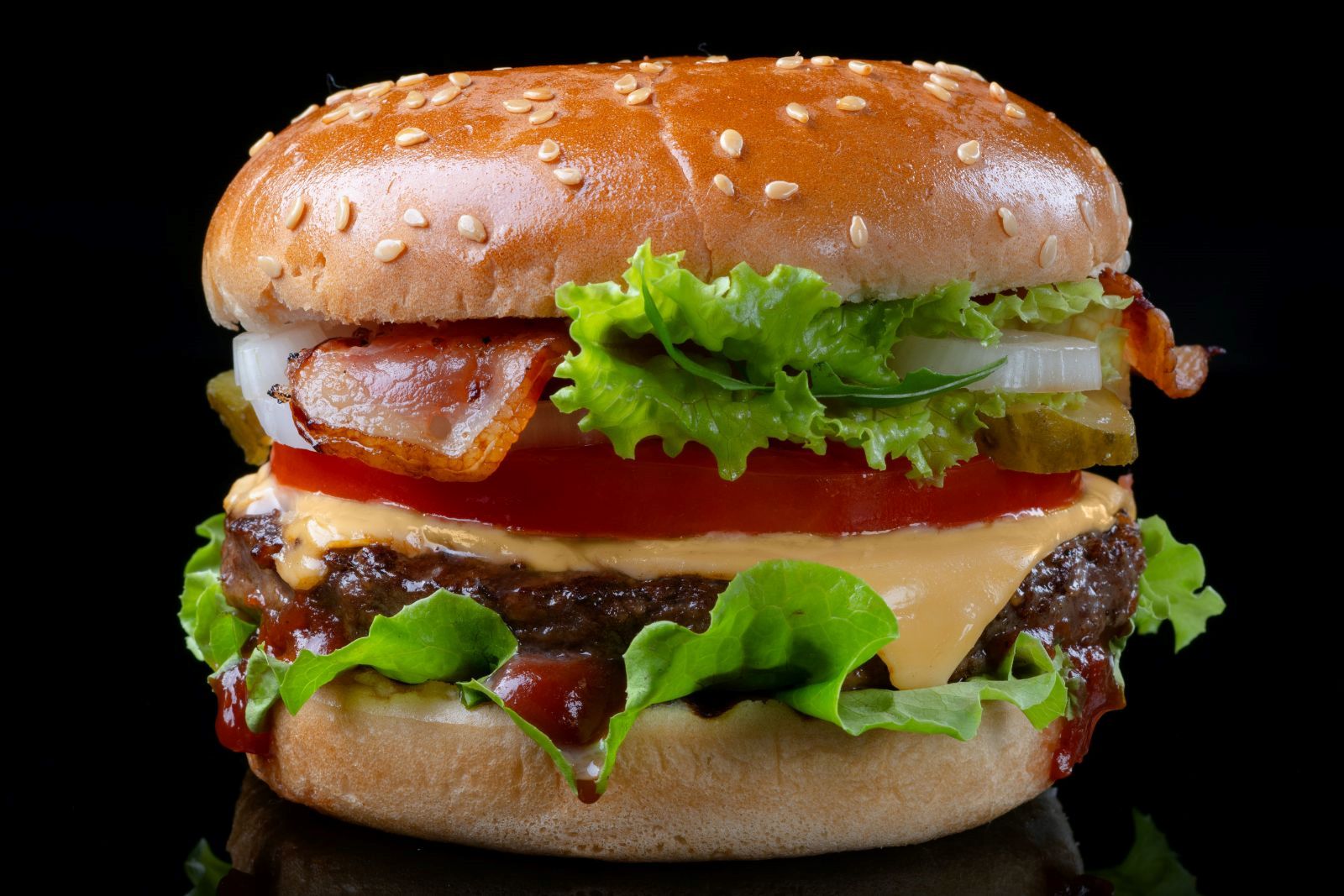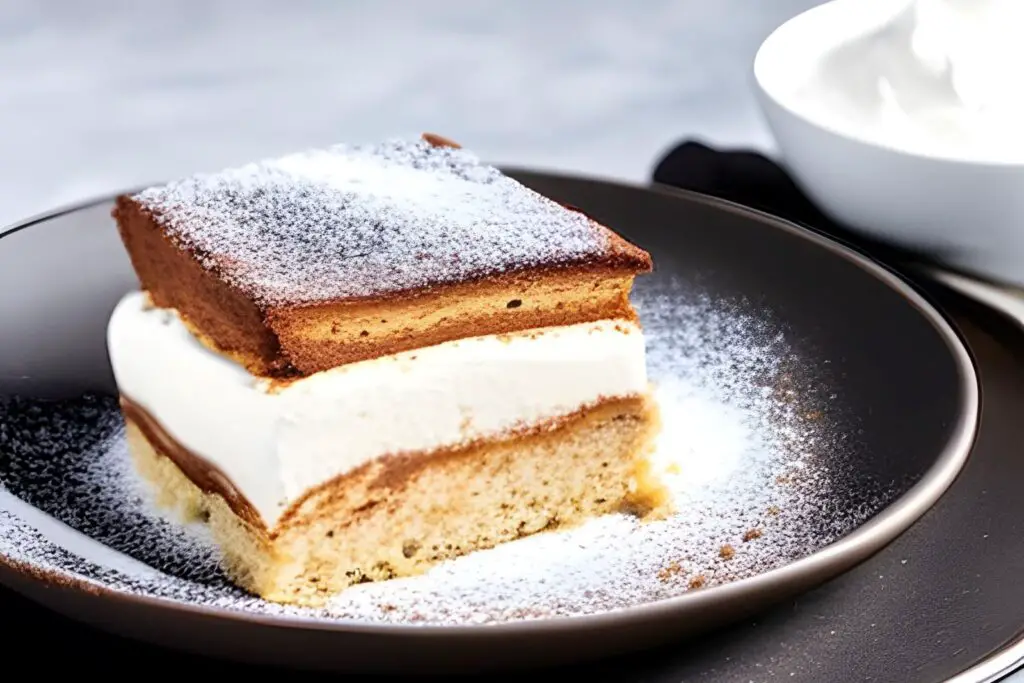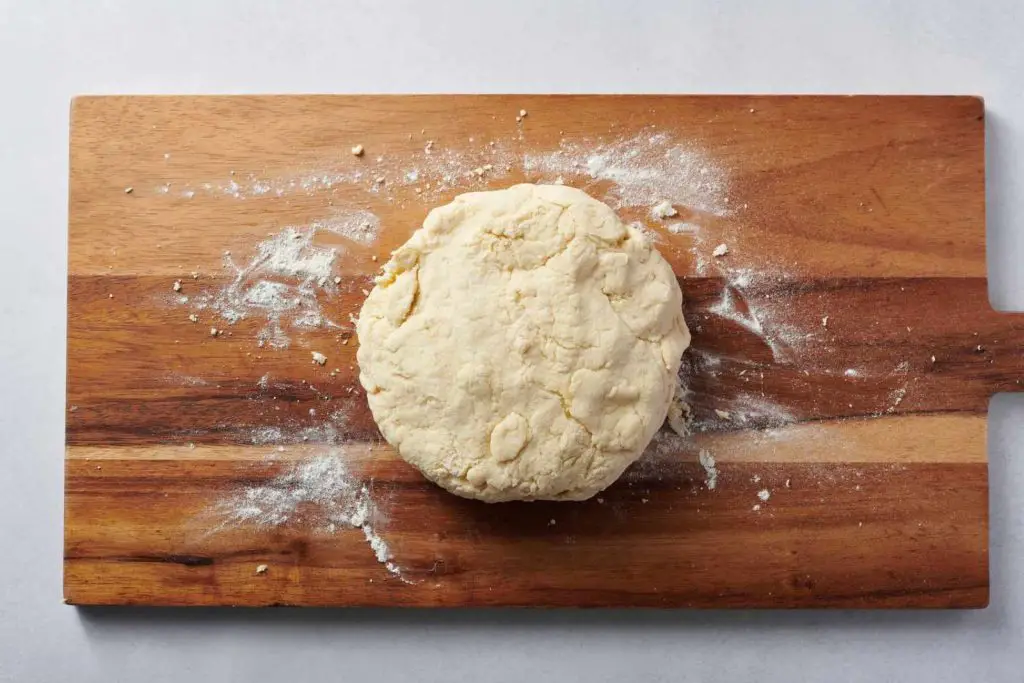
Burgers are a beloved staple in many households, offering a delicious and satisfying meal option. However, there may be times when you have more burgers than you can consume immediately or want to prepare ahead of time. Freezing burgers is a fantastic solution that allows you to extend their shelf life while retaining their taste and juiciness. By following a few simple steps, you can freeze burgers effectively and ensure they are ready to be enjoyed whenever you desire a quick and convenient meal.
Here are the simple steps to freeze burgers:
Step 1: Select the Right Burgers
Freezing burgers start with selecting the right kind of ground beef. The quality of the meat plays a significant role in ensuring that your frozen burgers turn out delicious and flavorful. Here are some important factors to consider when choosing the burgers for freezing.
- Quality and Freshness: Opt for fresh, high-quality ground beef from a trusted source. Look for meat that is bright red in color, without any signs of discoloration or unpleasant odor. Fresh meat ensures that your burgers have the best possible flavor and texture.
- Fat Content: It is recommended to choose ground beef with a sufficient fat content, typically around 15-20%. The fat in the meat adds moisture to the burgers during the freezing process, helping them stay juicy and flavorful when cooked later on. Leaner meat may result in drier burgers after freezing and thawing.
- Seasonings and Additives: While ground beef forms the base of your burgers, you can enhance their taste by adding various seasonings and additives. Experiment with different combinations of spices, herbs, and condiments to customize the flavor profile. For example, you can incorporate diced onions or Worcestershire sauce to impart a savory and aromatic touch to the burgers.
- Uniform Size and Thickness: To ensure even freezing and cooking, shape the ground beef into patties of consistent size and thickness. This allows for more consistent heat distribution, resulting in burgers that cook evenly and are enjoyable to eat.
By selecting fresh, high-quality ground beef with appropriate fat content and experimenting with different seasonings and additives, you can create flavorful and juicy burgers that freeze well and maintain their quality. Taking the time to choose the right ingredients will undoubtedly enhance your frozen burger experience.
Can I freeze burgers with different seasonings and additives?
Yes, you can freeze burgers with different seasonings and additives. When adding seasonings and additives to the ground beef, ensure they are thoroughly mixed in. Shape the seasoned patties as desired and follow the standard freezing process. The frozen burgers will retain the flavors of the seasonings and additives, enhancing the taste when cooked later.
Step 2: Shape and Pack
After selecting the right ground beef for your burgers, the next step is to shape and package them appropriately before freezing. Proper shaping and packaging ensure that the burgers freeze uniformly and remain easy to handle and cook later on. Here’s how you can do it:
- Shaping the Patties: Begin by shaping the ground beef into patties of your desired size and thickness. A common recommendation is to form them into 1/2 to 3/4-inch thick patties. However, you can adjust the thickness based on your personal preference and the cooking method you plan to use.
- Preventing Sticking: To prevent the burgers from sticking together or to the packaging, it’s crucial to create a barrier between them. One option is to separate each patty with sheets of wax paper or plastic wrap. Place a sheet of wax paper or plastic wrap between each patty before stacking them. This separation prevents the patties from freezing together and makes it easier to separate individual burgers later on.
- Alternative Packaging: If you prefer, you can stack the shaped patties in individual freezer-safe containers. Ensure that the containers are specifically designed for freezer use. Leave a small space between each patty to allow for air circulation and prevent them from sticking together. This method works well when you have limited freezer space or want to protect the burgers from any potential damage during freezing.
- Airtight Packaging: Regardless of the packaging method you choose, it’s essential to ensure that the patties are properly wrapped and sealed to maintain their quality. Use freezer-safe materials such as heavy-duty plastic wrap, freezer bags, or airtight containers to protect the burgers from freezer burn and prevent moisture loss.
By shaping the ground beef into uniform patties and using appropriate packaging techniques such as separating them with wax paper or plastic wrap or stacking them in individual freezer-safe containers, you can maintain the integrity of the burgers during freezing. Proper packaging minimizes the risk of freezer burn and makes it easier to handle and retrieve the burgers when you’re ready to cook them.
Step 3: Wrap and Seal
To ensure the long-term quality and protection of your frozen burgers, it is vital to wrap and seal them properly. This step creates a barrier against freezer burn, moisture loss, and potential contamination. Here’s how you can wrap and seal your burgers effectively:
- Individually Wrap Each Patty: Begin by individually wrapping each patty with plastic wrap. Ensure that the entire surface of the burger is covered and that there are no exposed areas. Wrapping each patty separately helps to maintain their shape, prevents them from sticking together, and makes it easier to handle and thaw them later on.
- Squeeze Out Air and Use Resealable Freezer Bags: Place each patty in a resealable freezer bag after wrapping each patty. These bags are specifically designed to provide an extra layer of protection against moisture and air. Before sealing the bag, squeeze out as much air as possible. Removing excess air minimizes the chances of freezer burn and helps maintain the burgers’ quality. It also prevents the formation of ice crystals, which can affect the texture of the burgers.
- Properly Seal the Freezer Bag: When sealing the freezer bag, ensure a tight and secure closure. Press out any remaining air and then seal the bag completely. Double-check for any gaps or openings that could allow air or moisture to enter. A properly sealed bag helps maintain the burgers’ moisture content and prevents potential contamination from other freezer items.
- Consider Additional Layers of Protection: For added assurance, you can place the individually wrapped burgers in a second layer of protection, such as a plastic container or aluminum foil. This provides an extra shield against freezer burn and potential odor transfer from other foods in the freezer.
By individually wrapping each patty with plastic wrap, placing them in resealable freezer bags, squeezing out air, and ensuring a tight seal, you can protect the burgers from freezer burn, moisture loss, and potential contamination. Proper wrapping and sealing techniques maintain the quality and flavor of the burgers, making them ready for a delicious meal whenever you choose to cook them.
Are there any alternatives to plastic wrap for wrapping burgers before freezing?
Yes, there are alternatives to plastic wrap for wrapping burgers before freezing. One option is to use freezer-safe resealable bags, which provide airtight protection. Another alternative is to wrap the burgers with aluminum foil, ensuring they are tightly sealed to prevent air exposure. Additionally, you can use freezer paper, which has a waxy coating on one side that helps keep moisture in and air out. These alternatives offer effective protection for frozen burgers while minimizing the use of plastic wrap.
Step 4: Label and Date
Creating an organized freezer is essential for efficient meal planning and easy retrieval of your frozen burgers. To achieve this, take a moment to label each freezer bag with the contents and the date of freezing. This simple step will help you keep track of the burgers’ freshness and ensure clarity when deciding which ones to use first. Here’s how to label and date your freezer bags effectively:
- Contents: Clearly write the contents of the freezer bag on the label. Include specific information such as “Beef Burgers” or any additional details like seasonings or additives you may have used. This labeling ensures that you can quickly identify the type of burgers you have stored without needing to open the bag.
- Date of Freezing: Write the date when the burgers were frozen on the label. This step is crucial as it allows you to determine the age of the burgers and prioritize their usage accordingly. By knowing the freezing date, you can ensure that the oldest burgers are used first, reducing the risk of them being forgotten or left in the freezer for an extended period.
- Permanent Marker or Labels: Use a permanent marker or labels that adhere well to the freezer bags. Regular ink or labels may smudge or become illegible over time due to the cold temperature and condensation in the freezer. By using a permanent marker or specialized freezer-safe labels, you ensure that the labeling remains clear and readable throughout the storage period.
- Placement: Place the label on a visible and easily accessible area of the freezer bag. This makes it convenient to identify the burgers without having to search through multiple bags. Additionally, consider placing the labels consistently in the same location on each bag for uniformity and ease of reference.
By labeling the freezer bags with the contents and date of freezing, you maintain an organized freezer and streamline your meal planning process. This simple step helps you track the freshness of the burgers and ensures that you use them in a timely manner. With clear and legible labels, you can quickly find the burgers you need, enhancing the efficiency of your cooking routine.
Step 5: Store in the Freezer
Properly freezing and storing your burgers is crucial for maintaining their quality and ensuring efficient use of freezer space. Follow these steps to freeze and store your burgers effectively:
- Find a Flat Space: Identify a flat area in your freezer where the burgers can freeze evenly without getting squished or damaged. Clear out any obstructions or items that may interfere with the placement of the burgers. This flat surface will provide stability and allow the burgers to freeze uniformly.
- Lay the Burgers Flat: Lay the individually wrapped or packaged burgers flat in a single layer initially. This arrangement promotes faster freezing and helps maintain the shape and integrity of the patties. Ensure that there is enough space between each burger to prevent them from touching or sticking together during the freezing process.
- Freeze Until Solid: Allow the burgers to freeze until they are solid. The time required for freezing can vary depending on the thickness of the patties and the temperature of your freezer. Typically, it may take a few hours or overnight for the burgers to freeze completely. Freezing them solid ensures that they retain their quality and texture during storage.
- Stack or Arrange Efficiently: Once the patties are frozen solid, you can stack them on top of each other or arrange them in a more space-efficient manner. Consider using freezer-safe containers or resealable bags for stacking, ensuring that there is a small space between each burger to prevent them from freezing together. If stacking, place a layer of wax paper or plastic wrap between the patties to facilitate separation.
- Maximize Freezer Space: As you arrange the frozen burgers, aim to maximize the available freezer space. Utilize vertical space by stacking the burgers, but avoid overpacking or placing heavy items on top of them, as this may cause damage. Organize the burgers in a way that allows easy access to individual patties when needed.
By finding a flat space in your freezer, laying the burgers flat initially, freezing them until solid, and then stacking or arranging them efficiently, you can maximize the available freezer space while keeping your burgers in optimal condition. Following these steps ensures that the burgers freeze evenly, maintain their shape, and are easily accessible for future use.
How long can burgers last in the freezer?
Burgers can typically last in the freezer for up to 3-4 months while maintaining good quality. Properly stored and packaged burgers can even last longer, up to 6-12 months, without significant loss of taste or texture. However, it’s always recommended to consume frozen burgers within the first few months for the best flavor and overall eating experience.
Step 6: Thaw the Frozen Burgers
Properly thawing your frozen burgers is essential for safe and delicious results. Follow these steps to thaw and cook your burgers effectively:
- Transfer to the Refrigerator: When you’re ready to enjoy your frozen burgers, transfer the desired number of patties from the freezer to the refrigerator. Place them in a shallow dish or on a plate to catch any drips and prevent cross-contamination. Thawing in the refrigerator is the recommended method as it allows for a gradual thaw and minimizes the risk of bacterial growth.
- Thaw Overnight: Allow the burgers to thaw in the refrigerator overnight or for approximately 24 hours. Thawing times may vary depending on the thickness of the patties and the temperature of your refrigerator. It’s important to be patient and avoid rushing the thawing process. Thawing slowly in the refrigerator helps maintain the quality and texture of the burgers.
- Cook as Desired: Once the burgers are fully thawed, you can proceed to cook them as you would with fresh ones. Choose your preferred cooking method, whether it’s grilling, stovetop, or oven, based on your taste preferences and the equipment available. Ensure that the burgers reach a safe internal temperature to eliminate any potential bacteria. Use a meat thermometer to check for doneness. Ground beef should be cooked to an internal temperature of at least 160°F (71°C).
- Customize to Your Taste: Feel free to add seasonings, sauces, or additional toppings to enhance the flavor of your burgers. You can season them before or during the cooking process according to your preference. Experiment with different ingredients and techniques to create a unique and delicious burger experience.
By thawing the frozen burgers safely in the refrigerator, allowing sufficient time for the burgers to thaw completely, and cooking them to the appropriate internal temperature, you can ensure that your burgers are both safe and flavorful. Enjoy your homemade burgers with your favorite accompaniments, such as buns, cheese, vegetables, and condiments, for a satisfying meal.
What are other methods of thawing burgers?
While thawing frozen burgers in the refrigerator is the recommended method for safe and even thawing, there are a few alternative methods you can use if you’re short on time. Here are three other methods of thawing burgers:
Cold Water Bath:
Fill a large bowl or basin with cold water. Ensure the water is cold, not warm or hot, as warm water can promote bacterial growth. Place the frozen burgers in a sealed plastic bag and submerge them in the cold water. Change the water every 30 minutes to maintain its cold temperature. Thawing time using this method can vary depending on the thickness of the burgers, but it generally takes about 30 minutes to an hour.
Microwave:
If you need to thaw the burgers quickly, you can use the defrost function on your microwave. Place the frozen patties on a microwave-safe plate and follow the manufacturer’s instructions for defrosting. It’s important to note that microwaving may partially cook the edges of the patties, so it’s crucial to transfer them immediately to the cooking method of your choice once they are thawed. Be cautious when using this method to avoid overcooking or uneven thawing.
Cooking from Frozen:
If you’re short on time and prefer to cook the burgers immediately without thawing, you can cook them directly from frozen. This method works best for thin or pre-formed patties. Simply adjust the cooking time and temperature accordingly. Keep in mind that cooking from frozen may take longer than cooking thawed burgers, and the center may be slightly less cooked than the edges. Use a meat thermometer to ensure the burgers reach a safe internal temperature.
Other related questions
Can you refreeze burgers?
Refreezing burgers is generally not recommended due to potential quality and safety concerns. When you thaw and refreeze burgers, it can lead to a loss of texture and flavor. Moreover, the process of thawing and refreezing increases the risk of bacterial growth and foodborne illnesses. It’s best to thaw only the amount of burgers you intend to cook and consume to ensure optimal taste and safety.
How do I know if the burgers have gone bad after being frozen?
To determine if a frozen burger has gone bad, look for signs such as a noticeable change in color, texture, or odor. If the burger appears discolored, develops freezer burn, feels excessively mushy, or emits a foul or off-putting smell, it is likely spoiled and should not be consumed. When in doubt, it is always safer to discard any frozen food that shows signs of spoilage to prevent the risk of foodborne illnesses.
How can I prevent freezer burn when freezing burgers?
To prevent freezer burn when freezing burgers, it is important to ensure proper packaging. Use airtight wrapping materials, such as plastic wraps or freezer bags, to create a barrier against air exposure. Remove as much air as possible from the packaging before sealing it. Additionally, storing the burgers in a flat, single layer initially and avoiding temperature fluctuations in the freezer can help minimize the risk of freezer burn.
Are there any specific tips for freezing pre-cooked burgers?
When freezing pre-cooked burgers, there are a few tips to keep in mind. Firstly, allow the cooked burgers to cool completely before freezing to avoid moisture buildup. Wrap each burger with plastic wrap or place them in separate freezer bags to prevent them from sticking together. Lastly, consider adding a layer of protective sauce or gravy over the burgers to help retain moisture during freezing and reheating.








